When Can a Puppy Eat Dry Food? [Age Guide]
Puppies are so cute and cuddly, and it’s hard to believe they grow up so quickly. When puppies first come into the world, all they want is to crawl up and nestle against their mother’s body heat (if she’s there). They’ll also be breastfed or drink formula to get the benefits they need for fast growth.
But, once the puppy grows to a particular age, they need to start eating dry food. So, when is the right time for this?
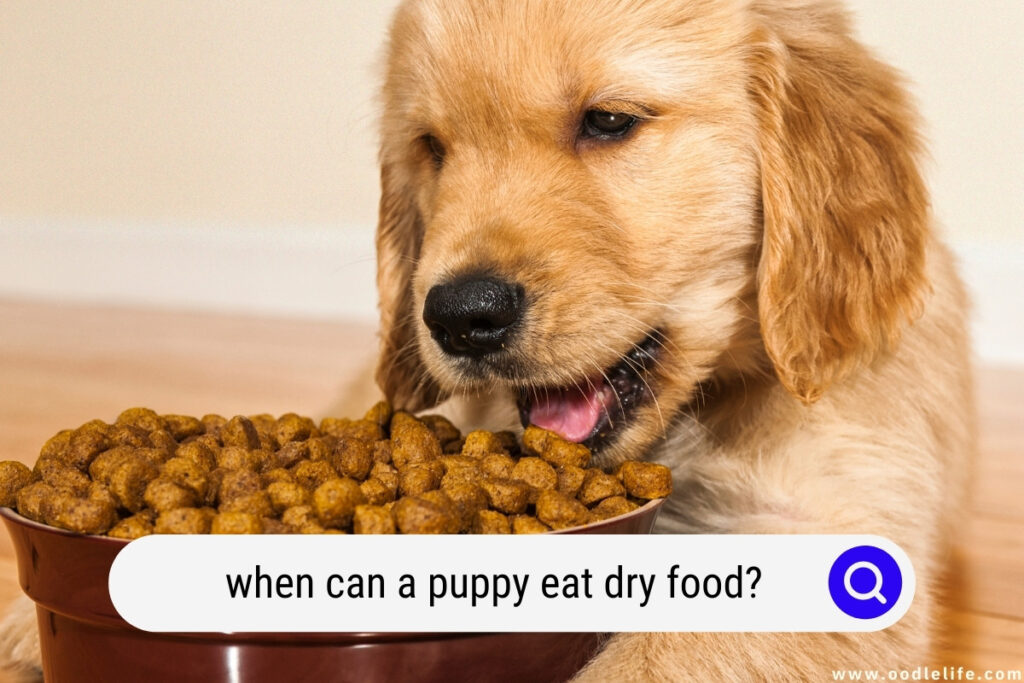
Puppies need a lot of energy to grow, so it’s essential to give them proper nutrition. Dry food is a great way to ensure they get all the nutrients they need without any fillers.
In this article, I’ll break down when puppies can start eating dry food and how to make the switch from wet food to dry. Keep reading for more information!
When Should You Wean Your Puppy?
If you’re caring for a young puppy, you’ll have to begin weaning them at about 4 or 5 weeks old. After that, you’ll gradually switch your puppy to solid food instead of milk from their mom’s milk or a milk substitute solution if she isn’t available during the weaning process. That means combining the puppy’s dry food with the milk formula until they get used to it.
Weaning can take around four or five weeks, during which your dog gets used to eating more solid foods. This implies that by the age of 9 to 10 weeks, your puppy will be consuming (or should I say gulping lol) dry or wet food on their own.
When the puppy’s teeth begin to come in, the mother will automatically start weaning. At this time, please don’t be concerned about them overeating. Your puppy must drink and eat a lot to meet its nutritional requirements!
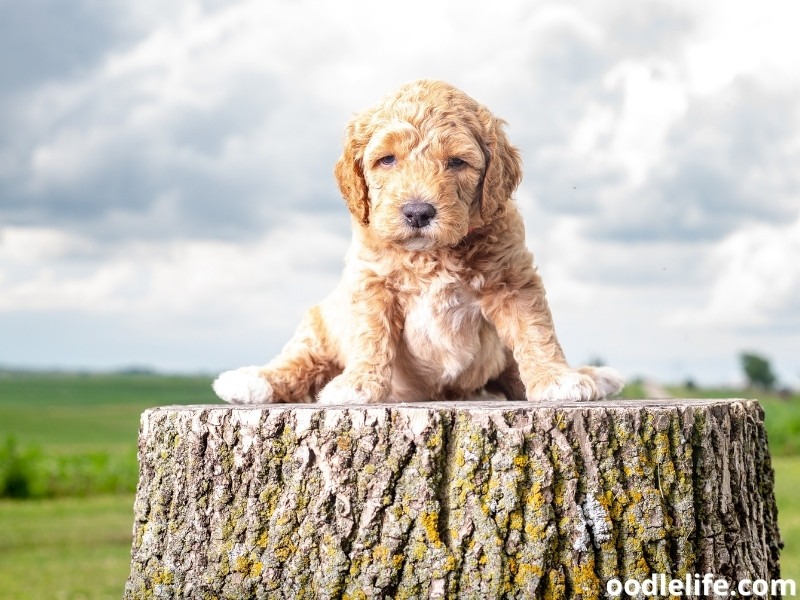
Puppy Mush to the Rescue!
Puppy mush is a soft, porridge-like food made from puppy formula and dry dog food. It’s easy to digest and nutrient-rich, making it the perfect food for puppies during the weaning process. Your puppy will not nurse as much from their mom or be bottle-fed once you start to wean them.
The top reasons for giving mush to pups rather than feeding them simply dry food are as follows:
1) Feeding Solid Foods to Puppies Can be a Strange Experience for Them
Puppies are used to food coming in liquid form, so when you give them dry kibble, they might not know what the heck it is. However, if you soak the kibble in milk (or some other liquid), the familiar smell will help them understand that they can eat it.
It is not advised to give puppies cow’s milk. Puppy milk or water is a better option. Soaking in water is better than soaking in people milk.
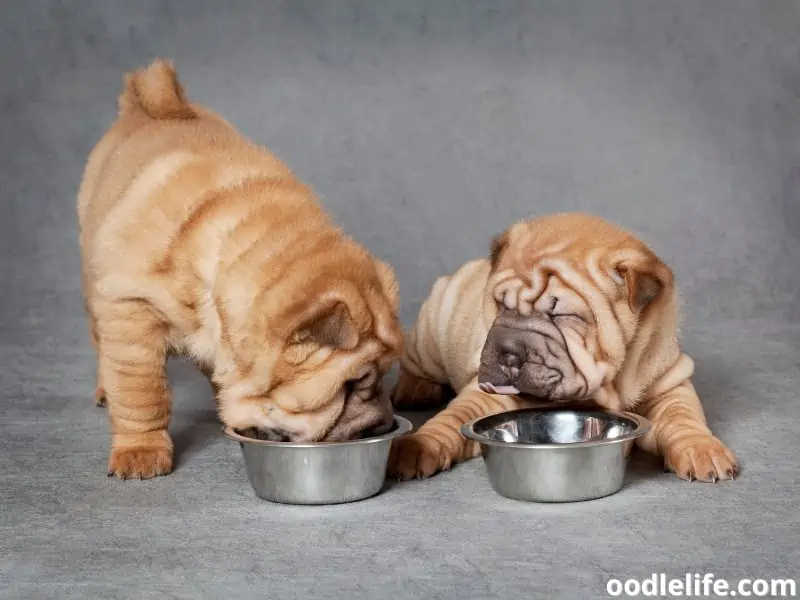
2) It Can Be Hard to Eat Solid Foods With Just a Few or No Teeth
Puppies start to grow their baby teeth when they are about two weeks old. But they don’t have a full set until about eight or nine weeks old.
Making a mush or soaking the kibble can make eating more accessible and pleasant. It will also have a calming influence on the gums. When your dog’s primary set of baby teeth falls out, it can safely chew dry kibble when it is old enough.
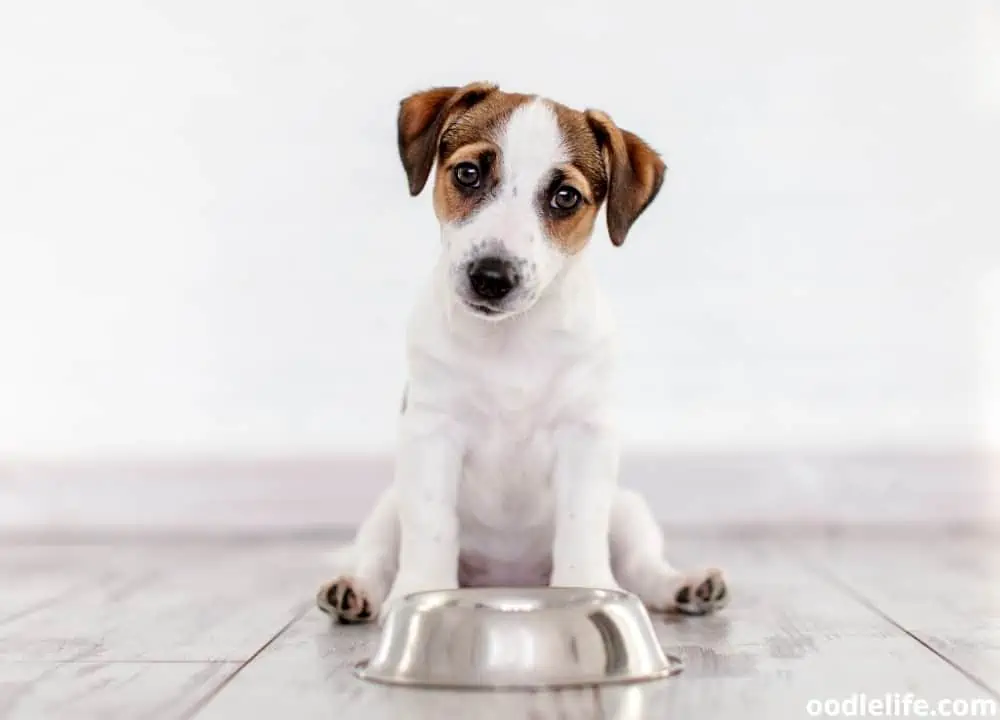
3) Puppies Have Sensitive Tummies
This means that they are used to slurping liquid foods, and if you suddenly change their food to dry food, it can be a shock to their system and cause problems.
Slowly transitioning your puppy from puppy food to adult dog food helps keep digestive problems from happening. This is important because puppies have sensitive stomachs.
According to veterinarians, puppies start getting their baby teeth about two weeks old. However, they will not have a complete set of teeth until they are between eight and ten weeks of age.
So now you’ll need to give your puppy something soft to chew on (preferably not your fingers!) until all of its little bitty teeth have come in. This will allow your pup to chew on the dry kibble comfortably.
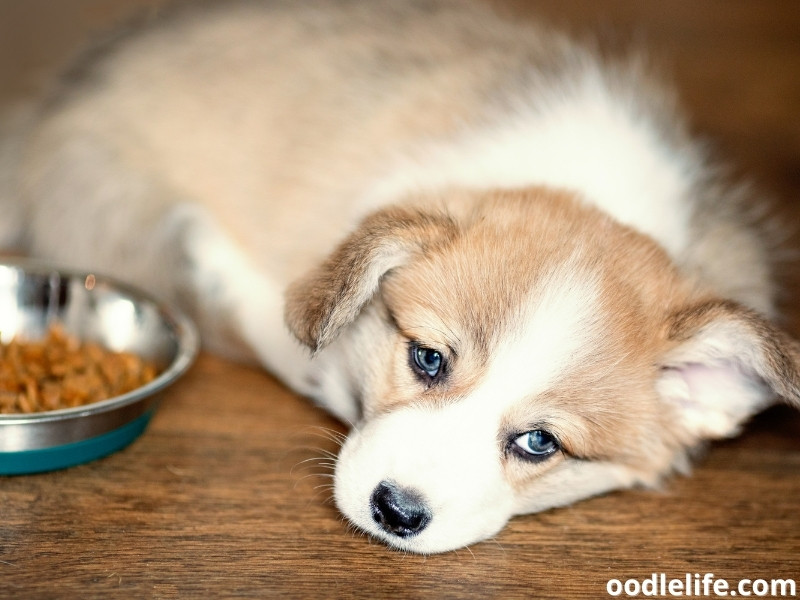
Weaning the Right Way
Once you’ve mixed everything, let it sit for a couple of minutes to thicken up. Then, simply spoon-feed your pup or offer it in a bowl.
The texture of the mixture should be smooth so that your puppy can eat it without difficulty. To improve the attractiveness of your puppy’s meal and make it more appealing, experts recommend heating it to around 20 degrees.
Your recipe for weaning your puppy during the first week is to mix three parts liquid with one part dry dog food. Let the water (or another acceptable liquid) soak in and mix it together to achieve a similar oatmeal consistency.
In the next three weeks, you will add one more part of puppy food to the mix each week while also decreasing the liquid by one part each week. If your puppy has a sensitive stomach, don’t hesitate to slow down this weaning process by a week or more.
When weaning your puppy, put the food in a small pan that he can get into to start licking up the mush. Puppies are messy eaters. They’ll walk in their food and sometimes even play with it.
You may need to clean them up using a damp cloth after they eat.
When the puppy has finished eating, put away any remaining food and wash the bowl. Please do not recycle food since this might lead to stomach infections and a sick dog. Instead, always offer your pup fresh mush!
Just like having a baby!!
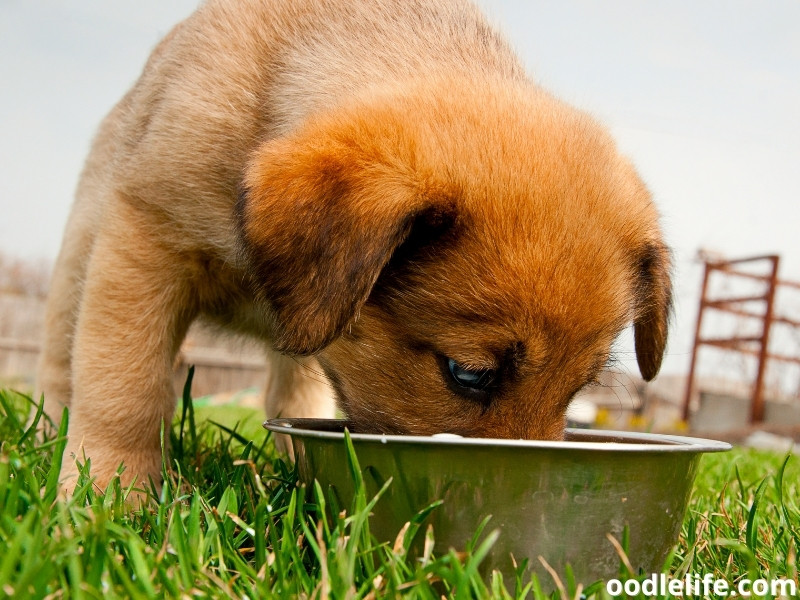
How Often and How Much Should You Feed Your Young Pup?
There are different types of dog food for different life stages. For example, puppy dog food is made for puppies, and there is also food for pregnant dogs or dogs that are growing.
Puppies have small bellies, and because of that, they should eat small meals frequently. Therefore, puppy chow should be offered four times every day.
You’ll need to feed your puppy based on their size. First, check the label of their wet puppy food or dry kibble for daily feeding suggestions. Then divide that total by four to get the right amount for each feeding.
This is how much food to give your puppy at each feeding. Different types of high-quality food are made for different-sized puppies. Puppy food for large breeds is made differently than the food for toy breeds.
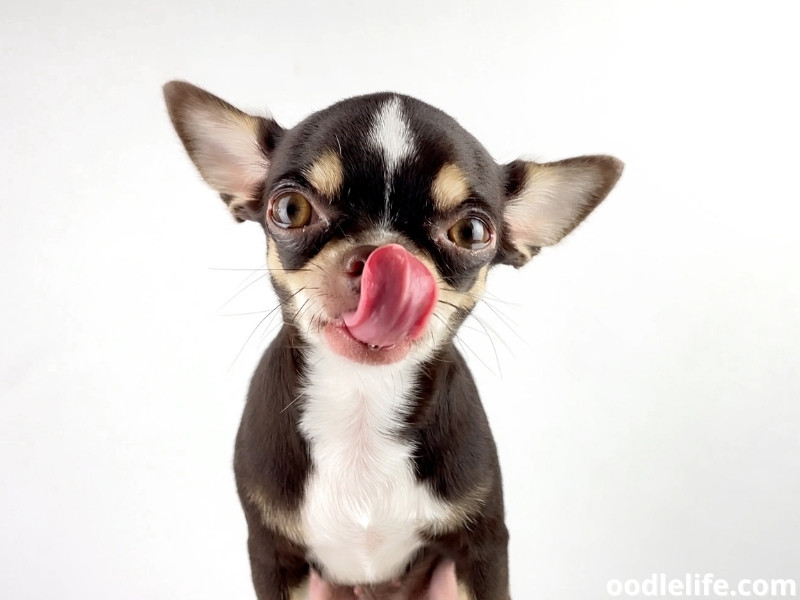
When Can You Feed Your Pup Hard Kibble?
At nine weeks old, your puppy will have at least 28 baby teeth that can easily chew firm meals. When your pup is about 9 or 10 weeks old, she will only eat her dry food.
Your puppy will not have a problem adjusting to solid food at this age. It will also aid in the reduction of teething discomfort by providing something for them to chew on!
Your puppy’s appetite for food will also rise as he matures. Your puppy will be extremely energetic at eight weeks old, and his hunger for food will follow suit!
If you’re still feeding him mush (a combination of milk and solid food), he won’t be satisfied for long.
Only by feeding your puppy hard food can you fulfill his growing appetite. Hard food will make your dog feel fuller for longer, meaning he’ll be less likely to need to eat as often.
This means you can leave a bowl of dry food out for them to eat through the day. The food will not go bad if left out, as wet food often does.
However, if you choose to free-feed, talk with your veterinarian because it might not be the greatest option for bigger breeds that gulp down their food. In addition, the ASPCA warns that overfeeding a large puppy breed can result in rapid bone growth, which is not desirable.
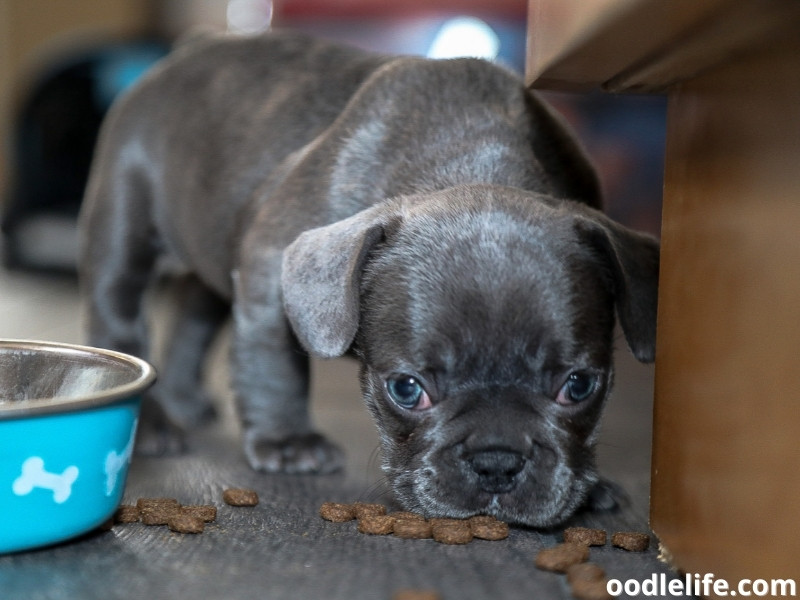
Should You Add Any Water To Your Pup’s Hard Food at This Age?
After a few days of feeding your puppy hard food, most people stop adding water to their meals. This is not advised, however.
Your puppy’s digestive system is still delicate, and dry food cannot be digested as efficiently as adult dogs.
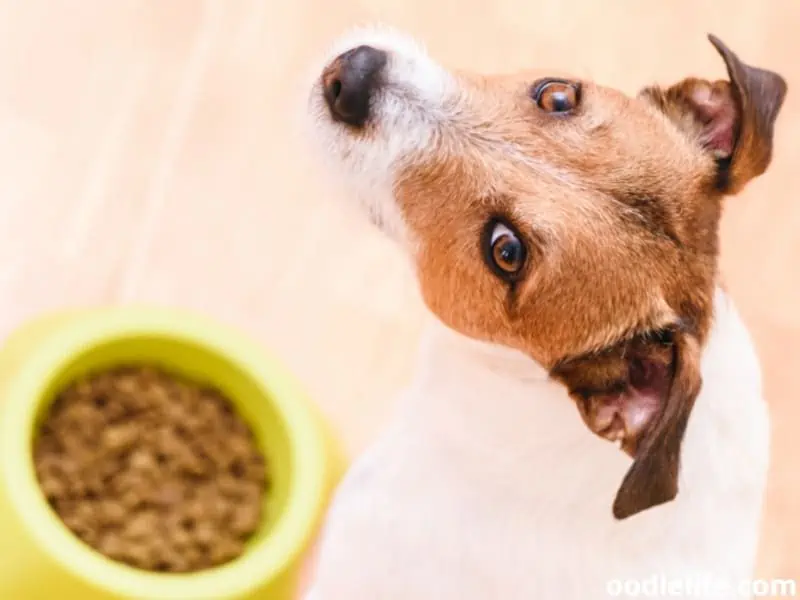
Adding water to your puppy’s dry food is recommended. There are several benefits to doing this, which are listed below:
Improves Digestion
When mixed with dry food for a puppy, water helps aid in the digestion process.
When your puppy eats dry food, it will most likely swallow it whole, forcing the digestive system to work harder to break down the nutrients. Water forces them to chew more.
Improves Appetite
Most pet parents believe that giving their puppy water will cause it to lose its appetite. The reality, however, is frequently the opposite!
On the other hand, adding water is more likely to increase your dog’s appetite. This is because when you add water to their food, it unlocks the scent trapped within, stimulating their desire to eat.
Slows Down Eating (Gulping)
Have you noticed that your dog’s bowl is cleaned in a matter of seconds? This is because, contrary to popular belief, dogs are not natural chewers of their food.
Water might help your puppy eat slower. Unfortunately, speed eating has been linked to several health issues, including bloating, constipation, and even asphyxia.
Final Thoughts
Making the transition from mom’s delicious milk to dry food can be a little challenging. But if you follow the basics by making the change slow and gradual while feeding them mush, things should go smoothly.
Things will become much more manageable once your puppy starts eating dry food. Just relax, stay calm, and let them get used to it.